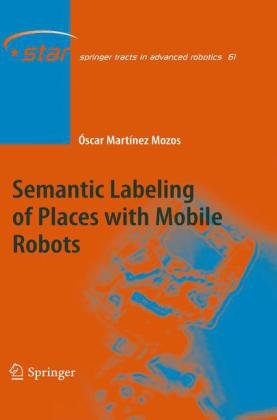

Most ebook files are in PDF format, so you can easily read them using various software such as Foxit Reader or directly on the Google Chrome browser.
Some ebook files are released by publishers in other formats such as .awz, .mobi, .epub, .fb2, etc. You may need to install specific software to read these formats on mobile/PC, such as Calibre.
Please read the tutorial at this link: https://ebookbell.com/faq
We offer FREE conversion to the popular formats you request; however, this may take some time. Therefore, right after payment, please email us, and we will try to provide the service as quickly as possible.
For some exceptional file formats or broken links (if any), please refrain from opening any disputes. Instead, email us first, and we will try to assist within a maximum of 6 hours.
EbookBell Team

4.3
18 reviewsDuring the last years there has been an increasing interest in the area of service robots. Under this category we find robots working in tasks such as elderly care, guiding, office and domestic assistance, inspection, and many more. Service robots usually work in indoor environments designed for humans, with offices and houses being some of the most typical examples. These environments are typically divided into places with different functionalities like corridors, rooms or doorways. The ability to learn such semantic categories from sensor data enables a mobile robot to extend its representation of the environment, and to improve its capabilities. As an example, natural language terms like corridor or room can be used to indicate the position of the robot in a more intuitive way when communicating with humans.
This book presents several approaches to enable a mobile robot to categorize places in indoor environments. The categories are indicated by terms which represent the different regions in these environments. The objective of this work is to enable mobile robots to perceive the spatial divisions in indoor environments in a similar way as people do. This is an interesting step forward to the problem of moving the perception of robots closer to the perception of humans. Many approaches introduced in this book come from the area of pattern recognition and classification. The applied methods have been adapted to solve the specific problem of place recognition. In this regard, this work is a useful reference to students and researchers who want to introduce classification techniques to help solve similar problems in mobile robotics.